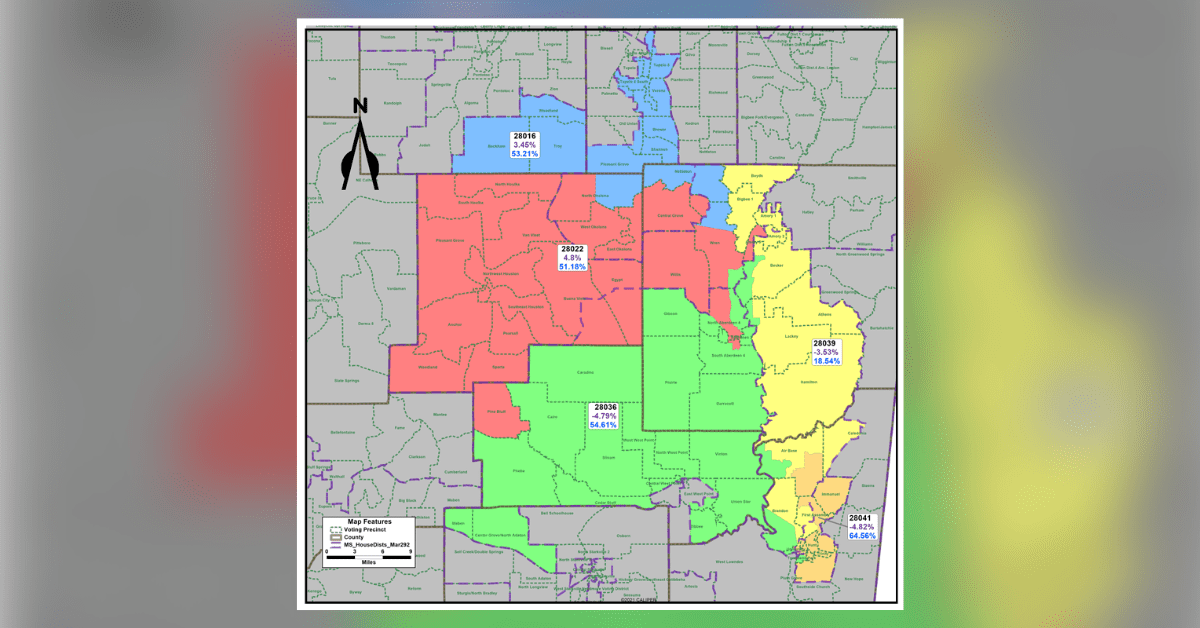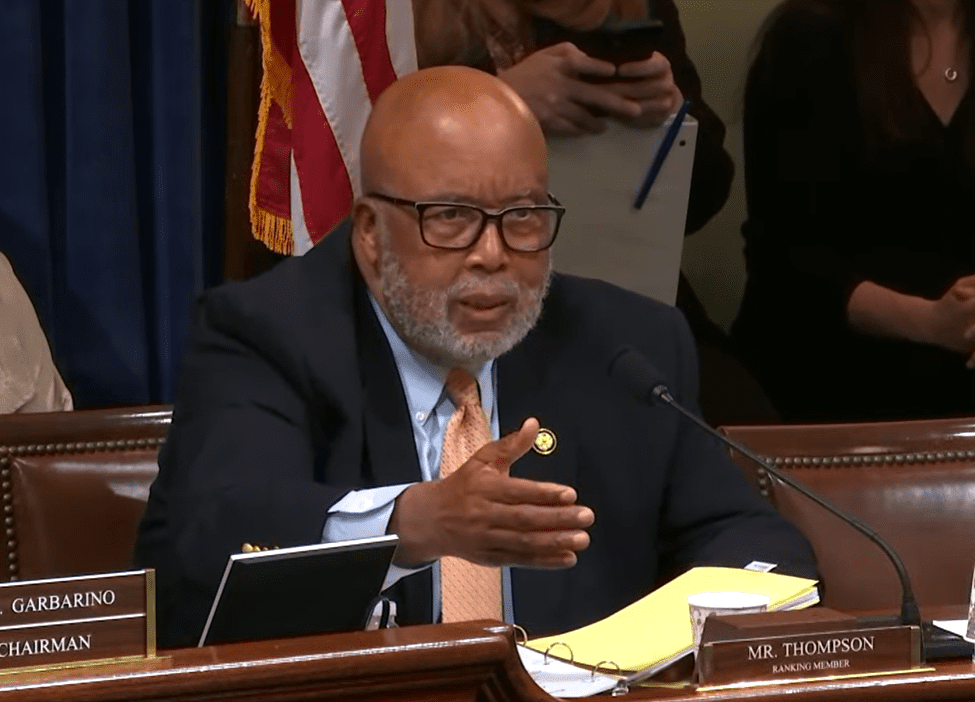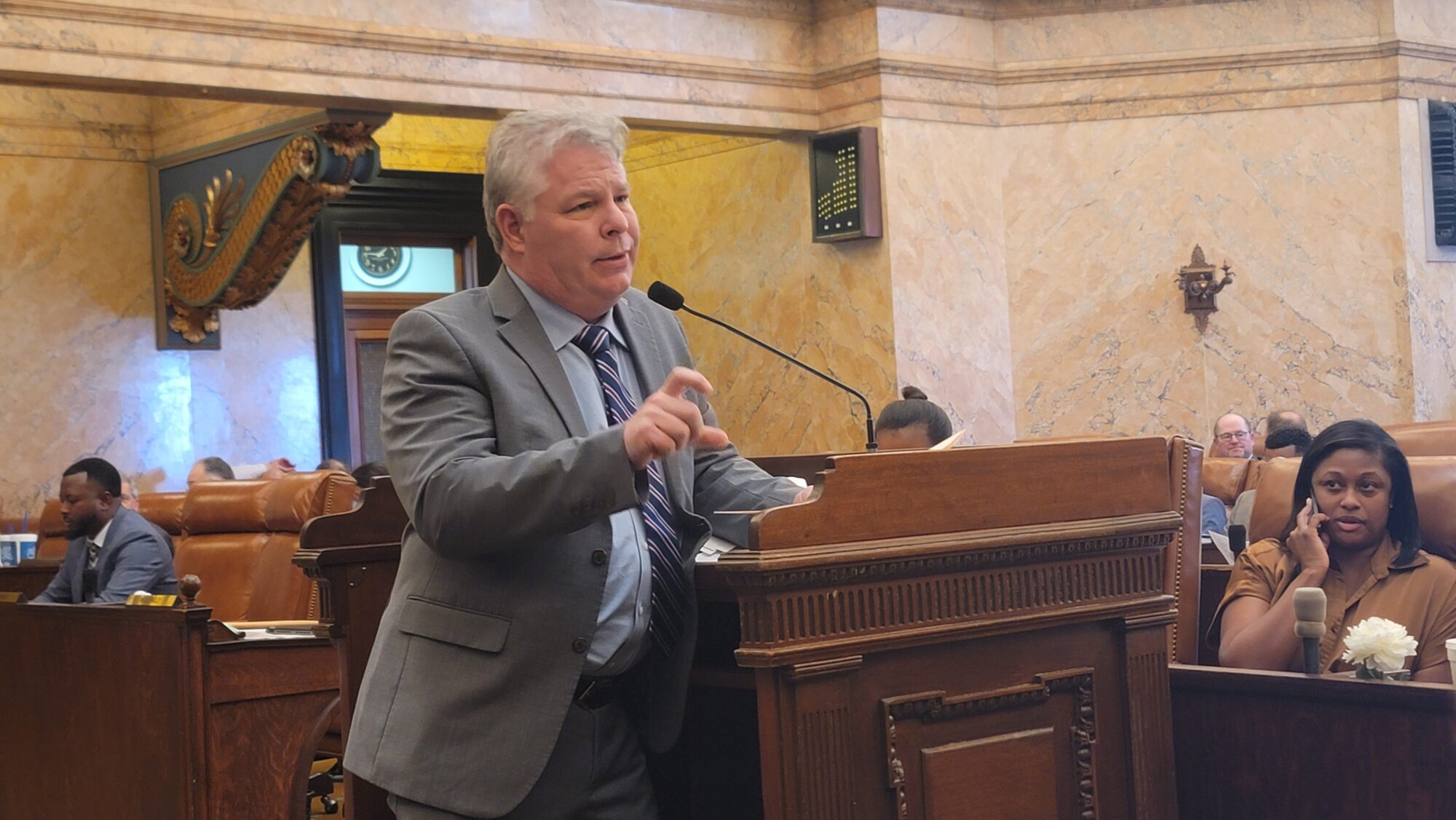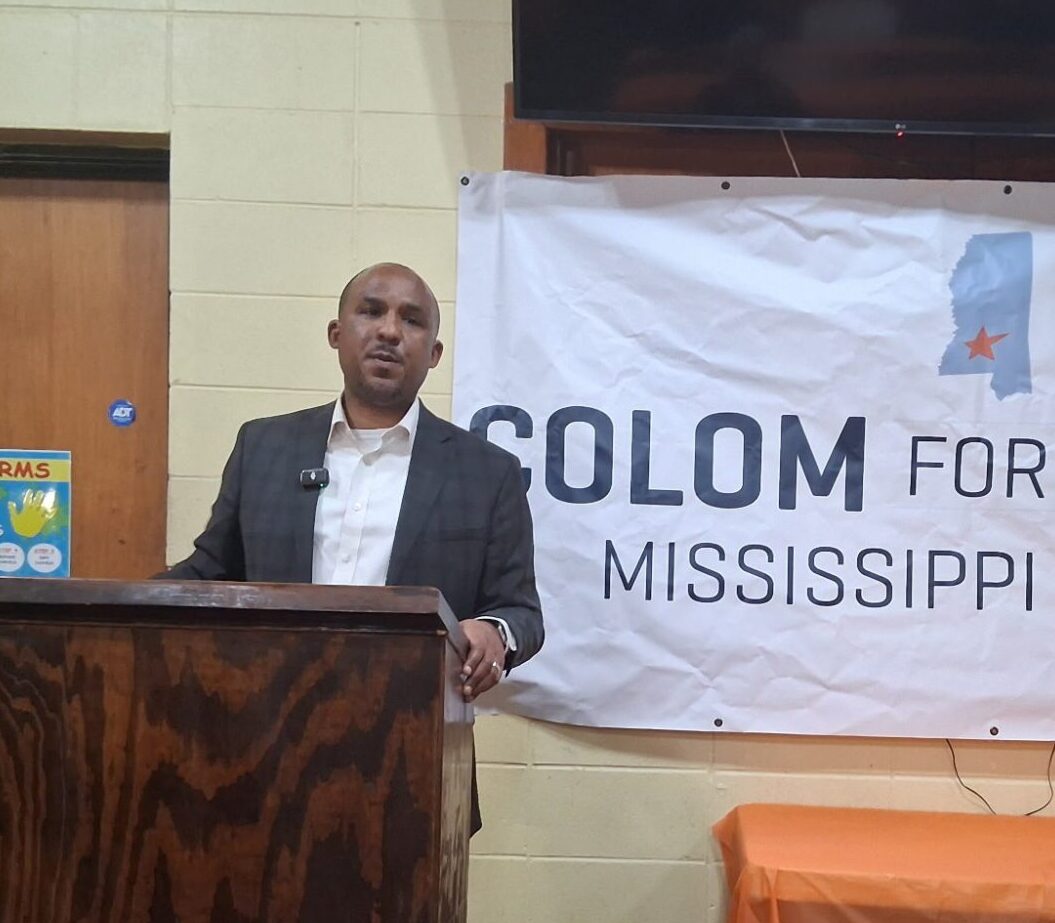
2025 proposed legislative redistricting plan for House District 22 and surrounding areas
- Four other districts will be affected by the territory shift, meaning special elections for these five seats under the new district map would be required later this year.
A federal three-judge panel ordered the supermajority Republican Mississippi Legislature to draw and adopt new state legislative district maps during the 2025 session and subsequently hold special elections to fill the seats.
The order came after the Mississippi NAACP filed a lawsuit challenging the 2022 legislative redistricting plan adopted by lawmakers. Those maps resulted in 15 of the 52 Senate seats and 42 of 122 House seats being majority-minority, or majority black voting age population districts.
READ MORE: Mississippi legislative districts must be redrawn in 2025, federal judges order
As previously reported, the decision came after the panel, composed of U.S. District Judge Sul Ozerden, Chief U.S. District Judge Daniel Jordan, and U.S. 5th Circuit Court of Appeals Judge Leslie Southwick, ordered the reconfiguration of some legislative districts, saying current districts as drawn dilute black voter strength in parts of the state.
On Thursday, the House rolled out its plan to address the court mandated redistricting.
State Rep. Noah Sanford (R), the chairman of the House Apportionment and Elections Committee, unveiled the changes.
House District 22, currently represented by State Rep. Jonathan Lancaster (R), would be a new majority-minority district with a black voting age population (BVAP) of 51.18 percent. Lancaster has represented the district since 2020 and would remain in the district.
Four other districts would be affected by the change – House Districts 16, 36, 39 and 41. HD 16’s BVAP would reduce from 62.29 percent to 53.21 percent. HD 36’s BVAP declines from 61.18 percent to 54.61 percent. HD 39 was not a majority-minority district before and will not be with the proposed territorial changes. HD 41’s BVAP would shift from 67.46 percent to 64.56 percent.
Sanford said no incumbents would be paired in the redistricting plan for the area.
“One of the important considerations in developing this proposed plan was maintaining the political performance in each district and with the exception of the court ordered redraw of District 22 to be a new majority-minority district, the proposed plan maintains consistent Republican and Democratic political performance throughout the remainder of the region and of course the state,” Sanford told House members.
The special election schedule for the affected districts would be a primary election in August and a general election in November.
“This is a good plan,” Sanford said, as it only impacts five total members. He noted that the NAACP’s proposal would have impacted eight members, but said he believes the plan as presented would still meet with court approval.
The ACLU of Mississippi took issue with the House redistricting plan, saying “with very little notice, and without public viewing or input, passed new legislative maps.”
“Even once new maps are passed, they ultimately will have to be approved by the Court. The process of reshaping legislative districts—something affecting the democratic voice of every Mississippian—should be open and transparent,” the ACLU said.
However, Sanford repeatedly noted on Thursday that he had met with the five House members prior to bringing the resolution to the House floor and considered input from a variety of sources as the plan was being developed.
The House passed the proposal by a vote of 80-33. Representatives Lancaster and Karl Gibbs (D-HD 36) voted for the plan. Representative Dana McLean (R-HD 39) opposed it while Representatives Rickey Thompson (D-HD 16) and Kabir Kareem (D-HD 41) voted present.
Senators will also be tasked with redrawing certain district lines this session. Their plan has not yet been released.
The below shows the proposed new House Districts throughout the state of Mississippi.











